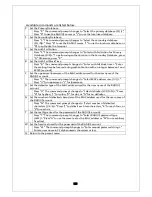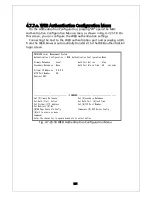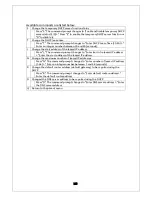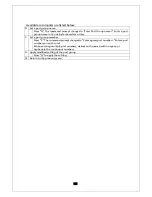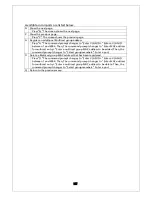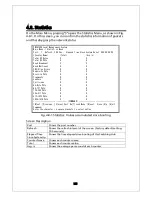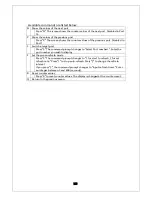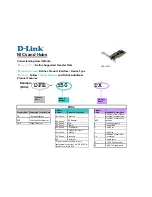
214
Available commands are listed below.
E Set the status of loop detection/shut-off function.
Press "E." The command prompt changes to "Enable or Disable Loop Detection
(E/D)>." Press "E" to enable the loop detection/shut-off function. Press "D" to
disable it.
I Press "I." The Loop History Information screen opens.
L Set the status of loop detection/shut-off function of each port.
Press "L." The command prompt changes to "Select port number to be changed>."
Enter a target port number. Then, the command prompt changes to "Enable or
Disable Loop Detection (E/D)>." Enter "E" to enable the loop detection/shut-off
function of each port. Press "D" to disable it.
When entering multiple port numbers, delimit with comma with no space, or
hyphenate the continuous numbers. Enter "0" to apply all ports.
S Set the status of recovery mode for auto-recovery of the shutoff port.
Press "S." The command prompt changes to "Select port number to be changed>."
Enter a target port number. Then, the command prompt changes to "Enable or
Disable Recovery for port x (E/D)>." Press "E" to enable auto-recovery of the port.
Press "D" to disable it.
When entering multiple port numbers, delimit with comma with no space, or
hyphenate the continuous numbers. Enter "0" to apply all ports.
T Set the recovery time in seconds, which is the standby time until the shutoff port is
automatically recovered.
Press "T." The command prompt changes to "Select port number to be changed>."
Enter a target port number. Then, the command prompt changes to "Enter
Recovery Timer>." Enter the recovery time in seconds from 60 to 86400.
Q Return to the previous menu.
Note:
If the status of loop detection/shut-off function (Global Loop
Detection Status) is changed, the configuration information is saved
and all settings are stored in a built-in memory.

